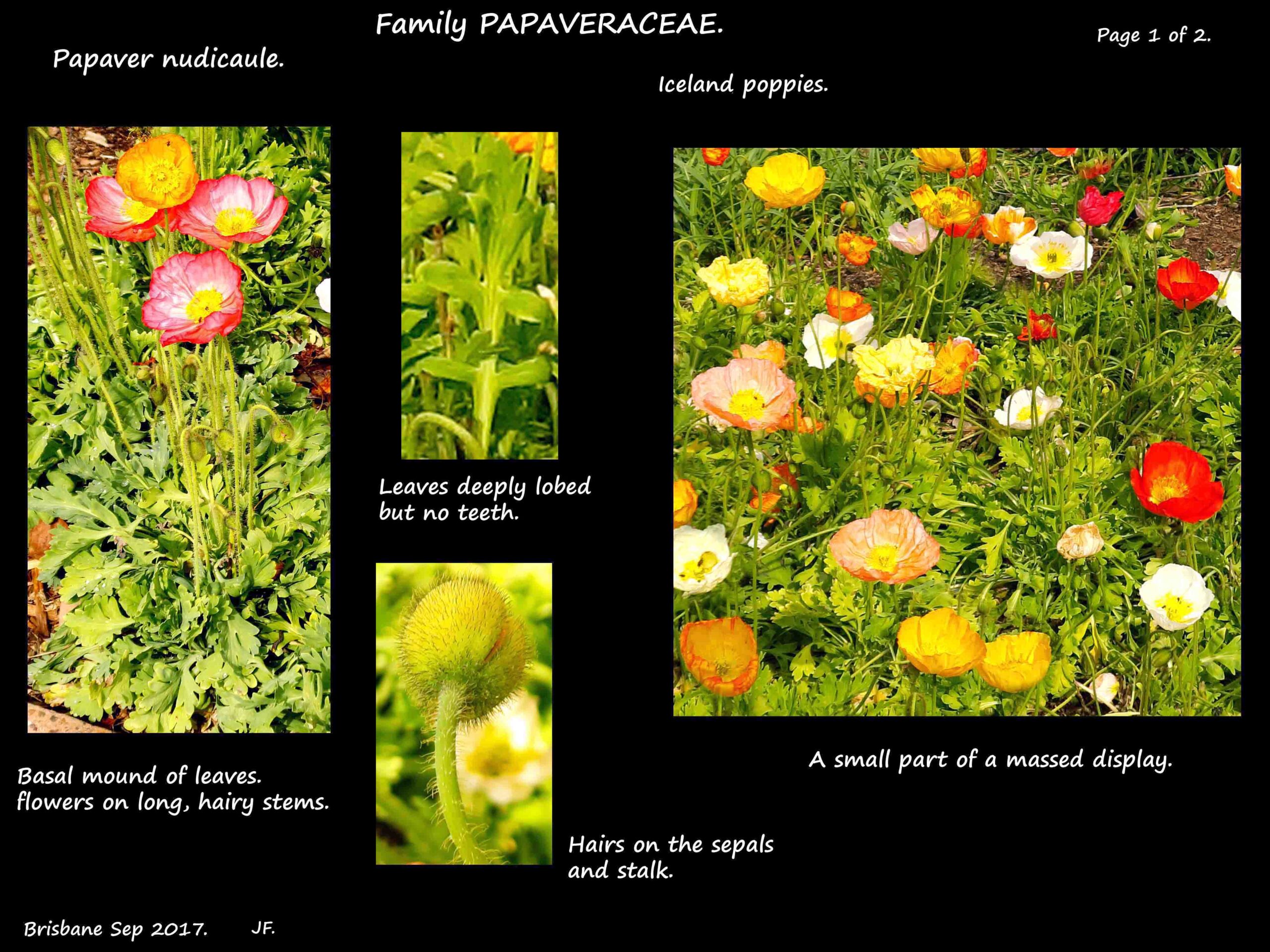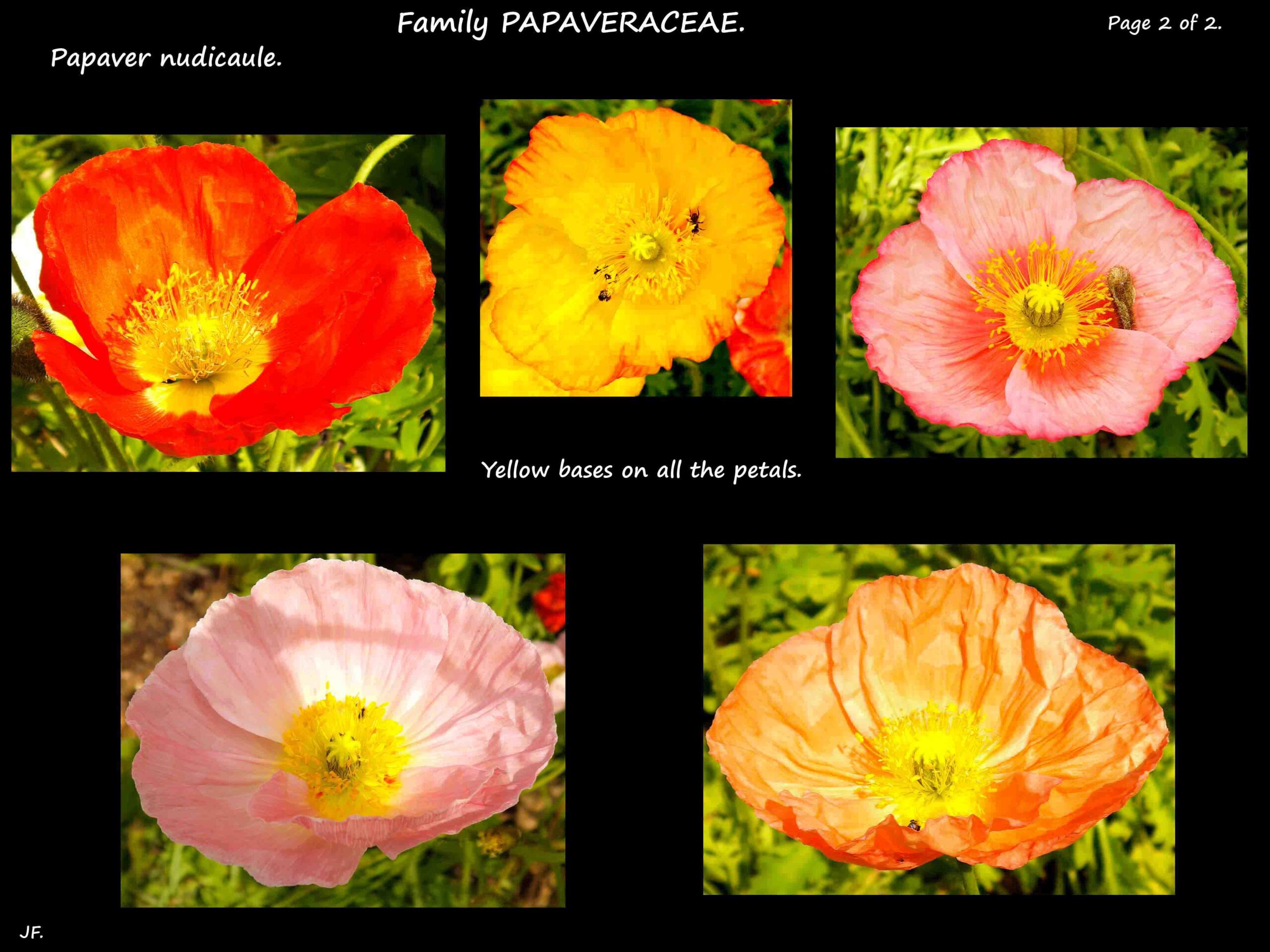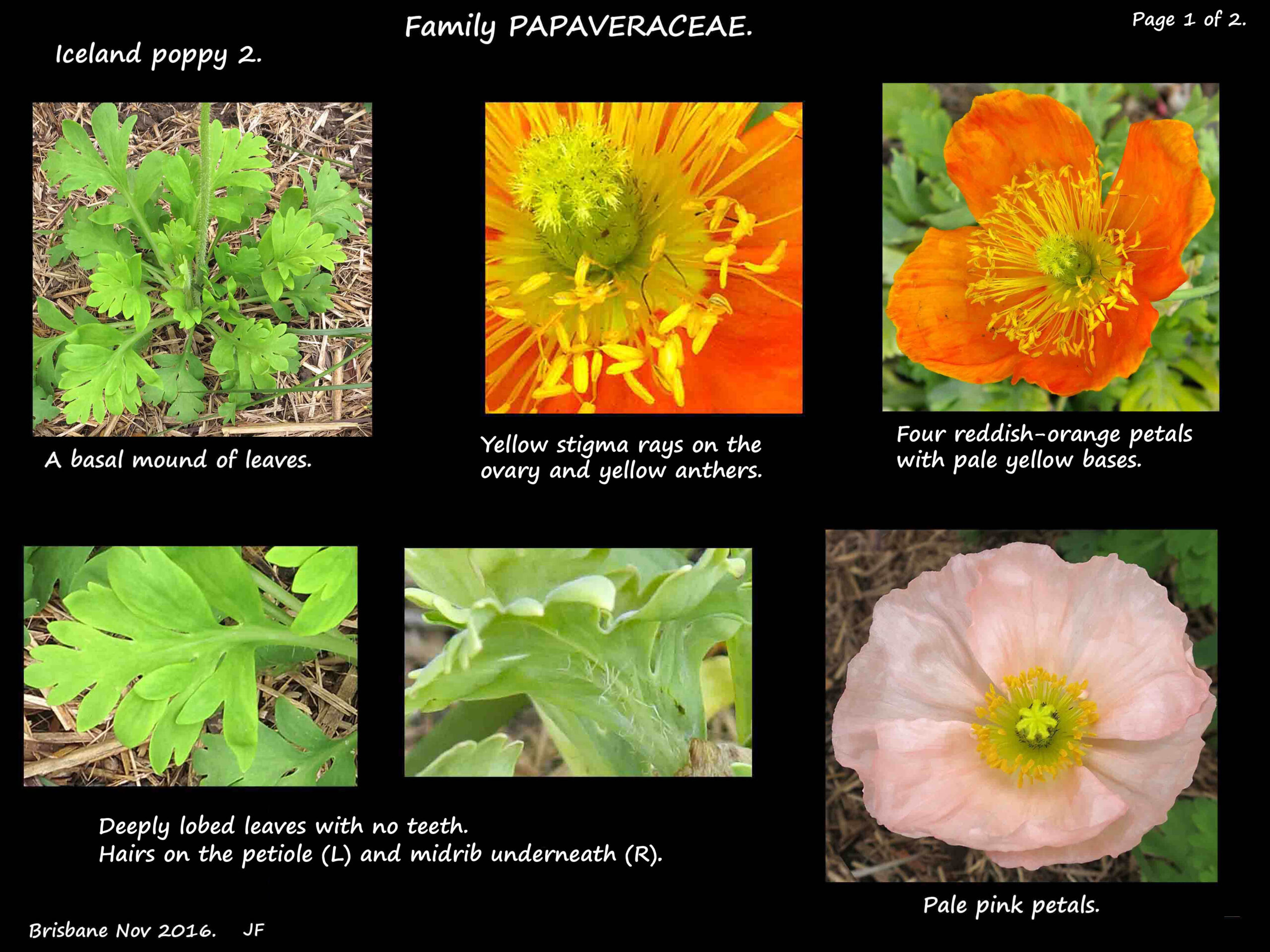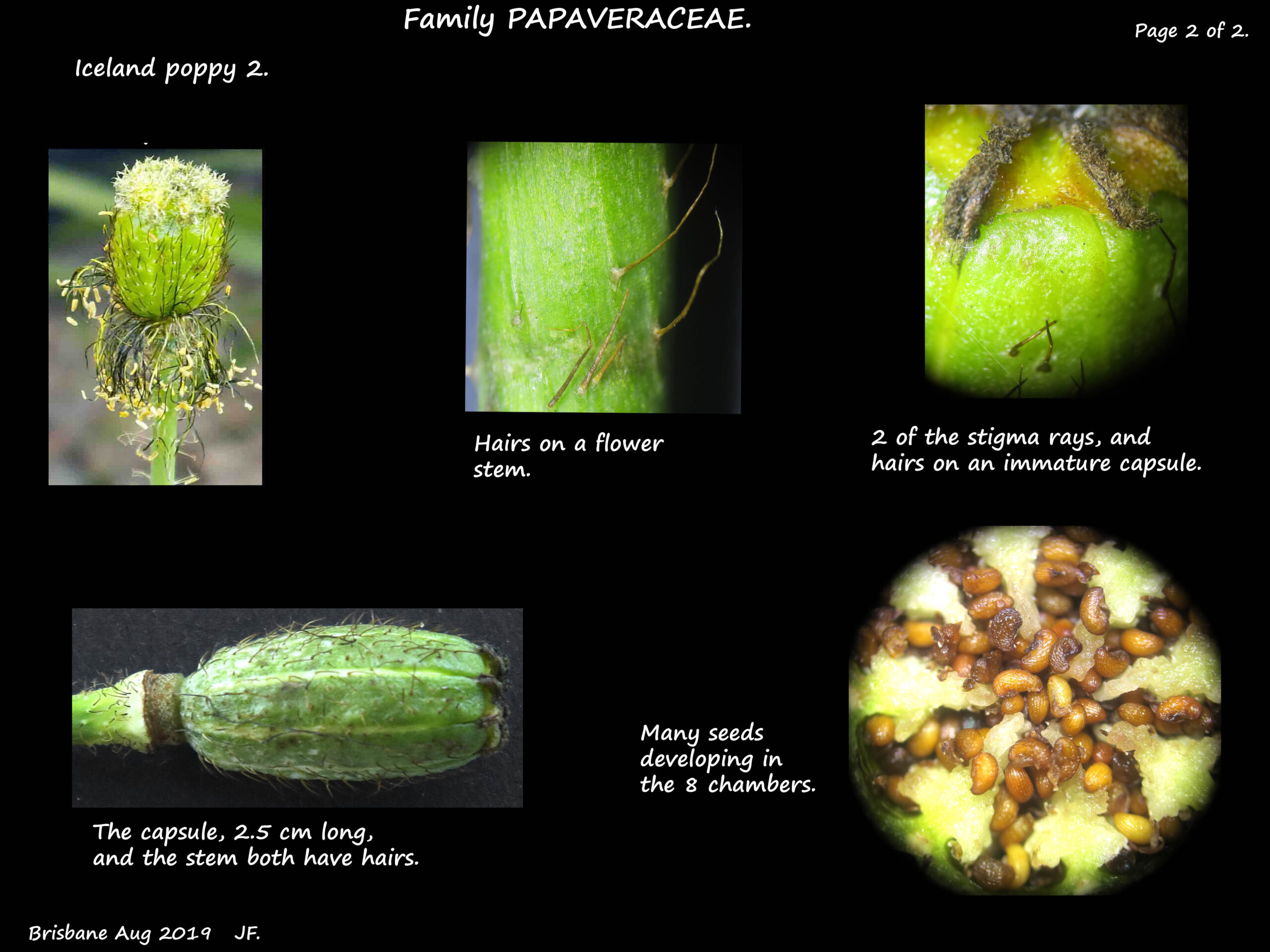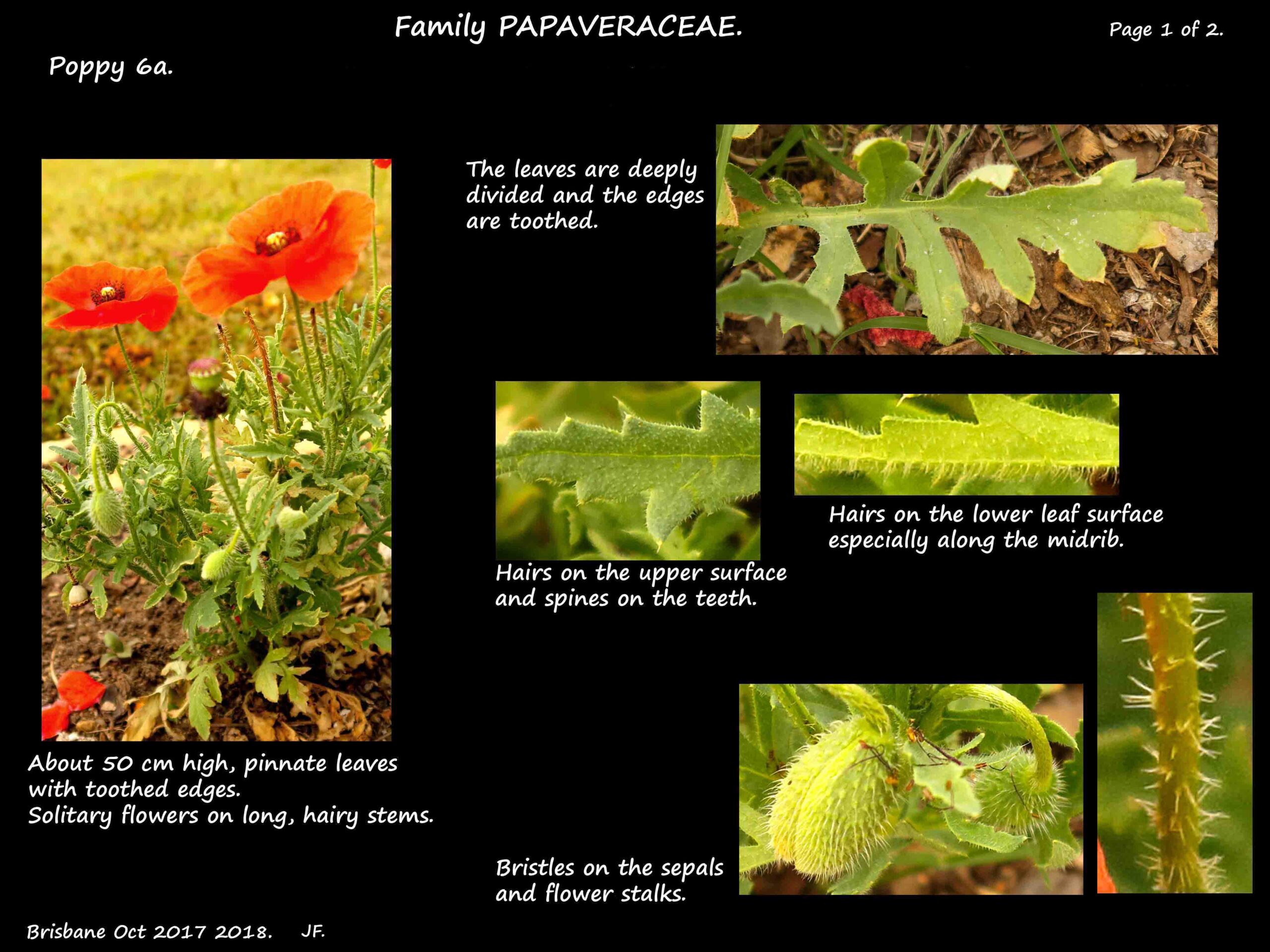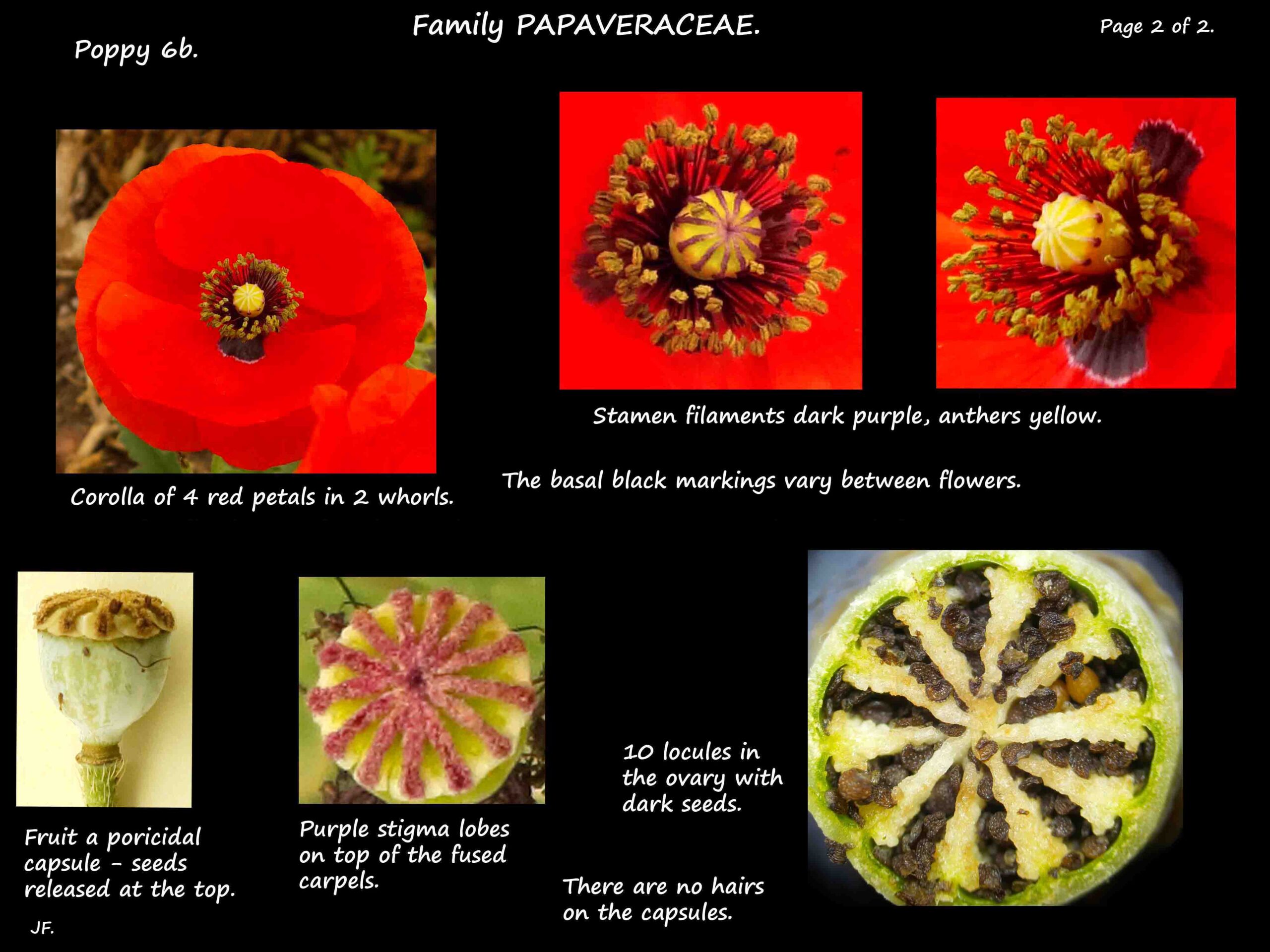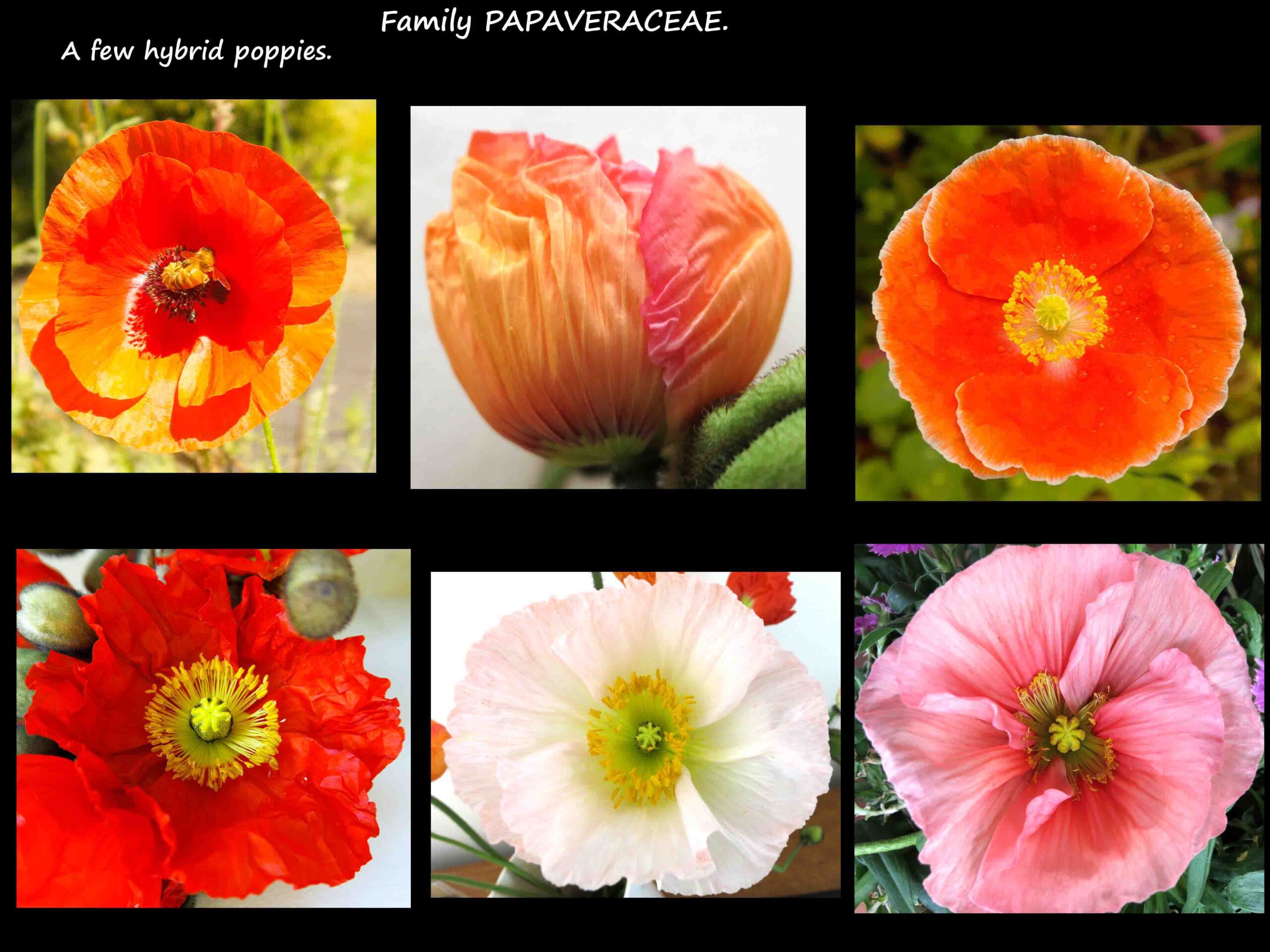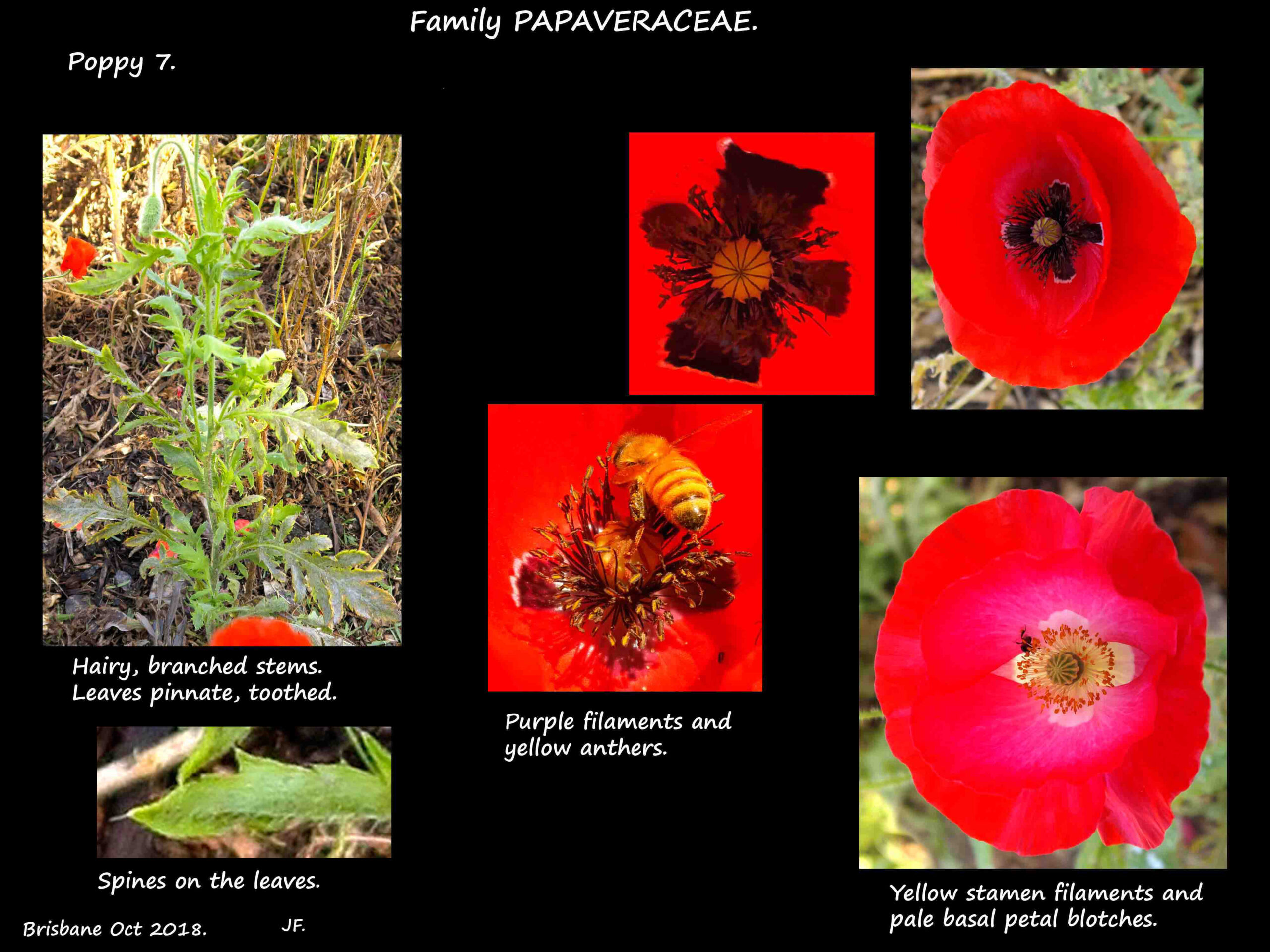Shirley, Flanders & Iceland poppies.
1. Papaver commutatum. The Caucasian scarlet poppy.
An erect annual growing to 45 cm with hairy stems and leaves.
The 15 cm long leaves are sometimes shallowly lobed.
The flowers, up to 8 cm wide, are bright red with black blotches at the petal bases.
The fruits are spherical capsules.
Papaver commutatum var ‘Ladybird’ is one of the poppies called Flanders poppy.
2. Papaver rhoeas. Corn, Flanders or Field poppy.
An annual herb up to 60 or 80 cm high that is covered in stiff hairs.
It has a basal rosette of leaves and upright leafy stems that usually branch.
Pinnately or bipinnately lobed leaves, with petioles, are up to 15 cm long.
There are no prickles on the margins.
The solitary flowers are on leafless stalks up to 90 cm long arising from the basal rosette.
There are stiff hairs on the stalk.
Flower buds are hairy and droop.
Flowers are up to 10 cm across with 4 petals.
Petals are a bright red, pink, orange or white often with a dark basal spot.
There are numerous stamens with purple filaments and blue anthers.
The ovary is smooth with no style but a stigmatic disc with up to 18 rays.
Fruit is a ovoid capsule.
3. Shirley poppies. Hybrids of Papaver rhoeas.
The original Shirley poppy, found at Shirley in England, was red with a narrow white
rim around the petals and black blotches at the base.
It was a natural variant of the wild field poppy Papaver rhoeas – also known as the Flanders poppy.
The wrinkled petals are white or red with small spots.
Cultivars come in single flowers in white and pastel colours in many shades of red and
pink, with no black markings.
There are some with a contrasting colour around the petal edges as well as semi-double and doubles.
It is a commonly grown garden plant.
4. Papaver orientale. Oriental poppy.
Plants, to 50 cm high, grow in clumps with a basal mound of leaves that die after flowering.
The blue-green or grey-green leaves, up to 25 cm long, are pinnately divided.
The segments have toothed edges and the surface is hairy.
The original flowers were a bright scarlet.
They are solitary and on the end of a leafy stem.
The many cultivars offer white plus a large range of colours including pink, orange and plum.
Flowers are up to 10 cm wide.
Then there are the ones with a second colour – white with black, orange, pink or red basal
blotches; pink with maroon or black; pale pink with red, maroon or black etc.
There are also doubles and some with highly fringed or creased petals.
5. Papaver nudicaule. Iceland poppy.
Short lived perennials up to 40 cm high.
The pale blue-green, hairy leaves are pinnately divided and up to 12 cm long.
The solitary flowers are on a hairy stem up to 25 cm long.
They can be 8 cm wide.
The original, wild flowers are white and yellow.
Cultivars come in a range of pastel colours including pink, orange, salmon and cream.
There is also a range of bi-coloured varieties, dwarfs and taller ones.
J.F.
